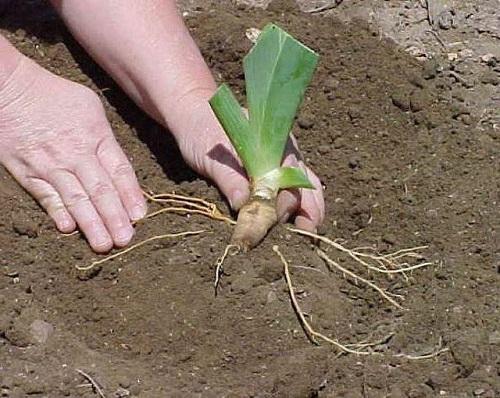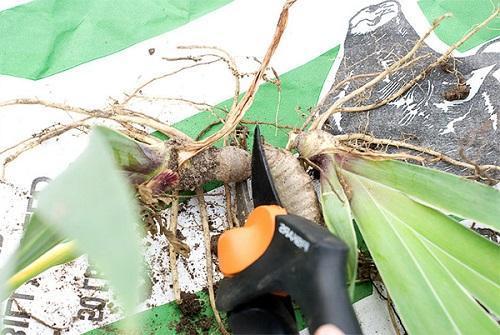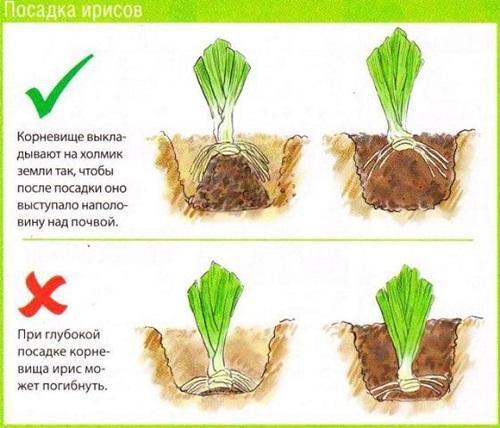Features of spring transplant of irises
 Irises, like most garden flowers, need periodic replanting. In one place, a young bush can grow from three to five years, but during this time it forms many new links that simply begin to bulge out of the ground. As a result, the flower is sick, and the flowering itself is noticeably depleted. Transplanting an iris helps to rejuvenate it, which increases the number of flower stalks and improves the general condition of the plant. In addition, in this way, plants reproduce well, since they take root easily and quickly.
Irises, like most garden flowers, need periodic replanting. In one place, a young bush can grow from three to five years, but during this time it forms many new links that simply begin to bulge out of the ground. As a result, the flower is sick, and the flowering itself is noticeably depleted. Transplanting an iris helps to rejuvenate it, which increases the number of flower stalks and improves the general condition of the plant. In addition, in this way, plants reproduce well, since they take root easily and quickly.
When to transplant?

Many growers start dividing the bushes in the fall or late summer, as soon as they fade. Can irises be transplanted in spring? Of course you can, because spring is a time of rapid growth of all vegetation. Irisesplanted in moist soil in spring, take root well.
The timing of the spring transplant depends on the regional climatic conditions, but in any case, it must be done as early as possible - as soon as the snow melts and the ground warms up a little. You should not postpone work, because with late planting, the roots can get sick and die.
When transplanting irises in spring, it should be borne in mind that the plants are likely to bloom only next year. Although there are cases that flowering still occurs in the current summer, but later.
How to transplant irises correctly in spring?

To plant an adult iris bush, you must:
- carefully dig it out with a pitchfork;
- divide into parts with a sharp knife, while each division should be about 10 cm long, several leaves and a well-developed root system of its own;
- if there are traces of decay, cut off the damaged parts of the roots, and lower the rest into a solution of potassium permanganate for two hours;
- if the roots are too long, it is better to cut them off, leaving no more than 5 cm;
- the leaves should also be trimmed to a height of 15 cm;
- sprinkle all sections with charcoal or activated charcoal and let them dry.
To plant separated irises, it is necessary to make shallow holes at a distance of at least 40 cm from each other so that the plants are not cramped for the next few years. Add a little saltpeter to each and superphosphate and mix them with earth. In the center of the hole, build an embankment of soil, install a divider on it and straighten the roots, directing them down. Cover with soil and crush it well around the iris with your hands.
The rhizome of the iris should be at the same level with the soil surface; it cannot be deepened much.